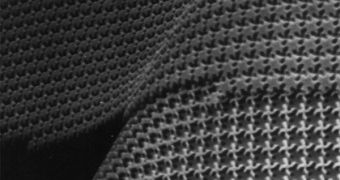Metamaterials have been studied extensively over the past few years, because they show great promise in devising ways of handling light in patterns never before thought possible. John Pendry's work is the base of this new field of research, since the expert proposed back in 2000 that perfect images with perfect resolution could be created by manipulating light with the aid of metamaterials. One of his models, which held that negative refraction could generate the amazing photos, was especially well founded in theory and gained a large following. Now, experts propose that perfect resolution can be attained without negative refraction, e! Science News reports.
For almost a decade, scientists have been trying to create devices that would achieve negative refraction, but their accomplishments fell short of the theoretical models. All the devices they created were close to being effective, but still absorbed some of the light shone on them, thus spoiling the resolution of the images. But work in this direction continued, because the model showed that hypothetical results would far exceed anything achievable through the use of conventional lenses.
In a new paper, entitled “Perfect imaging without negative refraction,” author Ulf Leonhardt, who is the chair of Theoretical Physics at the University of St. Andrew, says that he may have found another method of achieving the long-sought-after, perfect resolution. Details of his proposal appear in the September 29 issue of the New Journal of Physics, a publication co-owned by the Institute of Physics (IOP) and the German Physical Society (GPS).
The expert draws attention to a 160-year-old idea, which holds that fish-eye lenses could create images of unsurpassed quality. The idea was first proposed by James Clerk Maxwell, and Leonhardt believes that none of the studies made on this type of optical device to date has managed to account for the wave-like properties of light 100 percent. “It is the waviness of light that limits the resolution of lenses. Apparently, nobody had tried to calculate the imaging of light waves in Maxwell's fish-eye. The new research proves that the fish-eye has unlimited resolution in principle, and, as it does not need negative refraction, it may also work in practice,” the expert says.
“The theory was inspired by ideas for invisibility where light is bent around objects to make them disappear from view. Here the ideas behind invisibility are applied for perfect imaging,” he adds. Leonhardt admits that his work is purely theoretical at this point, but argues that further investigations in this direction could result in groundbreaking discoveries.

 14 DAY TRIAL //
14 DAY TRIAL //